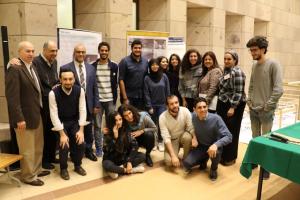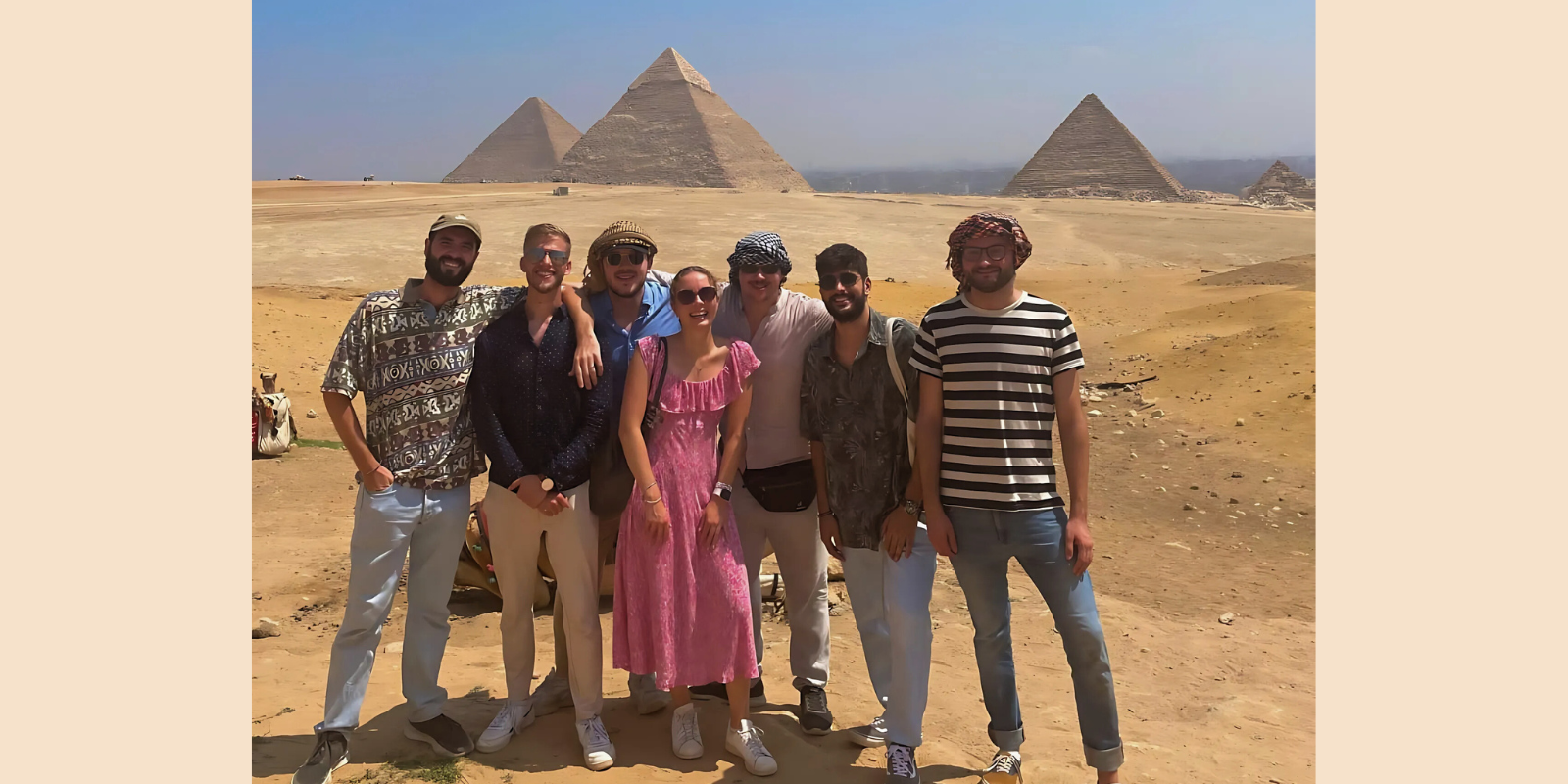
CMEPS Joint Program: Meet the Class of 2025 Visiting Cohort
Ever imagined a Middle East studies degree recognized in three continents? The Comparative and Middle East Politics and Society (CMEPS) is a joint master’s program offered by AUC and the University of Tübingen that allows students to study in both Germany and Egypt, inviting students from around the world to become global citizens.
Students in the two-year program study at both universities, completing three semesters at the home institution and one abroad at the partner institution, including Arabic and German language study. Cohorts are small, with 20 spots offered annually, 10 at each university.
Though the partnership between AUC and the University of Tübingen has spanned more than a decade, 2024 marks the first year in which the program has been offered as a joint degree, meaning students receive a degree accredited from both universities and recognized in Germany, Egypt and the United States.
With their semester at AUC coming to a close and bustling futures on the horizon, meet the current members of the visiting cohort.
“I can recommend the CMEPS program to any student passionate about Middle Eastern politics.”
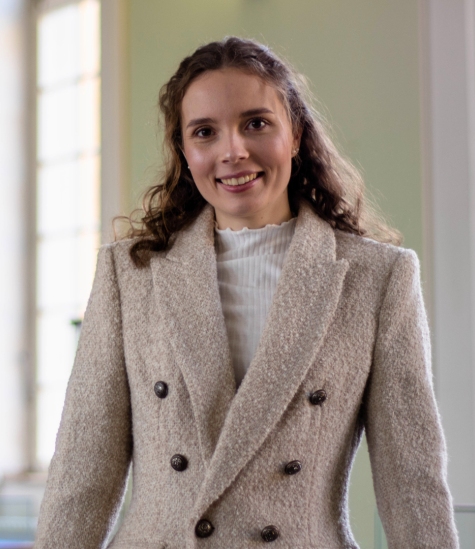
Marcia Ponzlet
Marcia Ponzlet is from Leverkusen, Germany and completed her undergraduate degree in political science and sociology, with a minor in public law. She joined CMEPS to learn about the Middle East while fully emerging herself into Egyptian culture and language.
“In my first semester as an undergrad, I took a class on feminist movements in the MENA region, and I really enjoyed it. I ended up taking a class about the Middle East every semester and quickly found my passion for all issues related to the region,” said Ponzlet. Next semester, she will split her time between Cairo and Tübingen while continuing to study Arabic and writing her thesis: “I would like to write my thesis on the effect of semi-autonomous governance on access to gender and reproductive healthcare,” she said.
Ponzlet particularly enjoyed her time at AUC, where she was surrounded by “kind and smart students and professors.” Between the pool and the running track, Ponzlet made the most of the sports facilities. She also enjoyed the quiet spots on campus where she could study.
“I can recommend the CMEPS program to any student passionate about Middle Eastern politics,” said Ponzlet, who hopes to stay in academia and complete a PhD, eventually working with a research institute or NGO focused on issues of state, security and gender.
Frederik Klär
“Check out the CMEPS website and social media, reach out to the people in the program, inform yourself, and just give it a try — it’s an amazing program.”
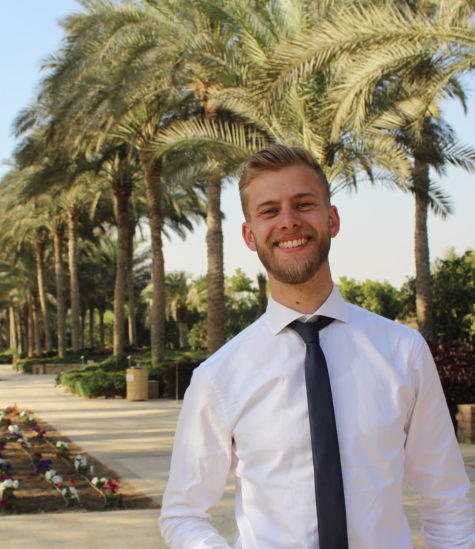
Frederik Klär has a bachelor’s degree in social sciences from the University of Cologne, located in his German hometown. Klär chose to join CMEPS because it was the “best in Germany” for Middle East politics due to the intensive language component and immersive semester at AUC.
Though Cairo is a long jump from Germany in its culture, “the city is everything I had expected and more. It’s an absolutely amazing experience. Outside of the University, there are so many interesting sites to visit, from the Siwa Oasis and Fayoum to Alexandria — I’m seeing pretty much everything the country has to offer.” Climbing Mount Musa in Sinai was Klär’s favorite memory in Egypt due to the mountain’s beautiful nature and sunrise.
For his final semester, Klär will complete an internship in Jordan at a German think tank, after which he will work on his thesis tackling religious nationalism with relation to conflict.
Klär was pleased by the course offerings and community at AUC. To prospective students, Klär says, “Check out the CMEPS website and social media, reach out to the people in the program, inform yourself, and just give it a try — it’s an amazing program.”
Cornelius Klodt
“Courses at AUC are very high quality, and the University offers wonderful practice-oriented courses.”
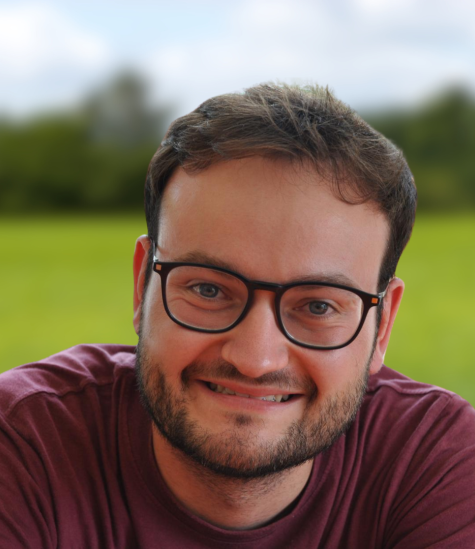
Cornelius Klodt is from Frankfurt, Germany, where he completed his bachelor’s in economics and political science. Klodt chose the CMEPS program because it has everything he was looking for in a master’s program.
“Courses at AUC are very high quality, and the University offers wonderful practice-oriented courses in which we discuss policy solutions and write policy briefs,” said Klodt. “I would definitely advise prospective students to enjoy the multiplicity of courses offered.”
As a political science student, Klodt highlighted the study-abroad benefit of understanding other perspectives. “Egyptians and Arabs in general have very different opinions on problems in the region and even on the role of the United States and Europe in the region,” said Klodt, who has learned a lot from his peers.
“Another great thing about CMEPS is that people take care of you; the faculty really care about their students and want us to have a great experience,” he said, “This is what makes or breaks CMEPS. The small cohort size really facilitates that too.”
In Cairo, Klodt enjoyed the culture more than anything. “My favorite memory might have been my visit to the Citadel, looking at the city and entering the beautiful mosques,” he said, additionally praising the food, people and historical sites.
In his final semester, Klodt will write his thesis and hopes to become politically active in his home country again. His thesis will probably cover the gamification (motivating through video games) of Islamist extremism and right-wing extremism in social movements.
Isaac Lanan
“Campus life is fun, students are friendly and professors are extremely knowledgeable. I love AUC!”
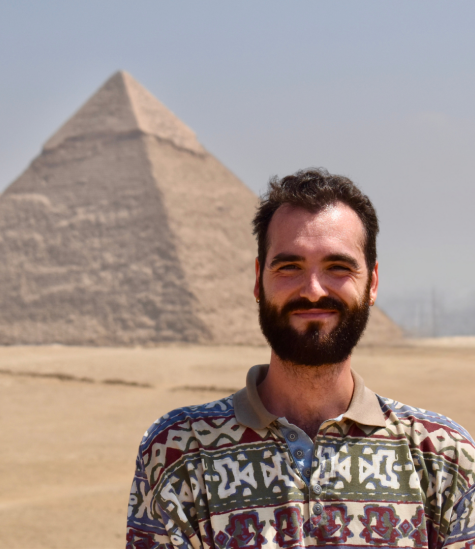
Isaac Lanan hails from the United States, where he has a bachelor’s in linguistics and Arabic language and literature from the University of Minnesota.
During and after his undergraduate studies, Lanan worked in political and community organizing in Minneapolis. When he heard about CMEPS, he immediately recognized it as an opportunity to bring together his Arabic studies and political experience. “I knew a semester in Cairo would be an impossible-to-overstate opportunity to improve my Arabic,” he said.
For Lanan, “Campus life is fun, students are friendly and professors are extremely knowledgeable. I love AUC!” To students considering the program, he advises to embrace the international aspect: “It is a huge learning opportunity.”
Like the rest of his cohort, Lanan also fell in love with Cairo. “I love big, energetic cities, and this is one of the greatest in the world. I have been impressed by Cairo’s vibrant local arts scene. The food here is incredible, and the coffee is even better,” he said.
Next semester, Lanan will write his thesis on the state response to extraterritorial dam construction on transnational waterways in a comparative study of the Egyptian response to Ethiopian construction and the Iraqi response to a Turkish project. “Outside of my studies, I want to complete an internship and visit my grandma in Argentina,” he added.
After graduating, Lanan hopes to work at a think tank, consultancy or international organization doing humanitarian or development work. He also dreams of returning to Egypt soon.
Angelos Chatzigiannis
“AUC offers a unique environment that combines academic excellence with diverse extracurricular opportunities."
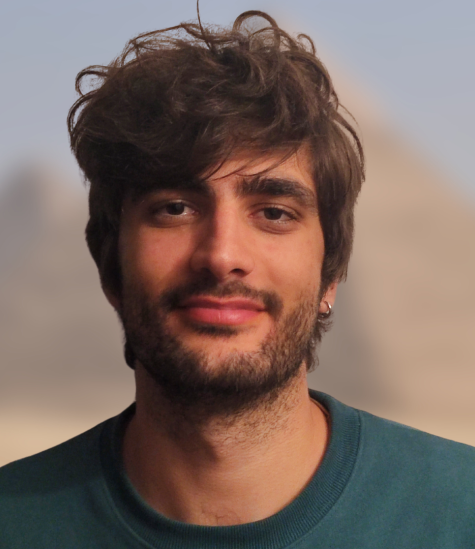
Born and raised in Greece, Angelos Chatzigiannis completed a political science degree at the Aristotle University of Thessaloniki. According to Chatzigiannis, the CMEPS program stood out as the “perfect choice for my academic aspirations” due to the opportunity to specialize in Middle Eastern politics — a goal he had set during his third year of undergraduate studies.
“AUC offers a unique environment that combines academic excellence with diverse extracurricular opportunities, such as the sports facilities, which allow me to practice my basketball hobby,” said Chatzigianni.
“Academically, the courses at AUC equip students with analytical tools to formulate complex arguments and understand the nuanced dynamics of the region,” he added.
Beyond the University campus, Chatzigiannis enjoyed Cairo’s “vibrant energy and bustling streets,” which he said “make it a must-visit for anyone interested in Middle Eastern studies.” Chatzigiannis uncovered hidden literary treasures at the city’s small vendor bookstores and made memorable trips to Alexandria as well as the Black and White Desert outside of Cairo.
Next semester, Chatzigiannis will return to Germany to work on his master’s thesis, which will focus on a comparative analysis of elite strategies in Lebanon and Iraq. “I hope to continue conducting research in the region after completing my master’s degree. I am excited for what lies ahead!”
Benedikt Holzschuh
"Cairo is often crazy and tumultuous, but I love that."
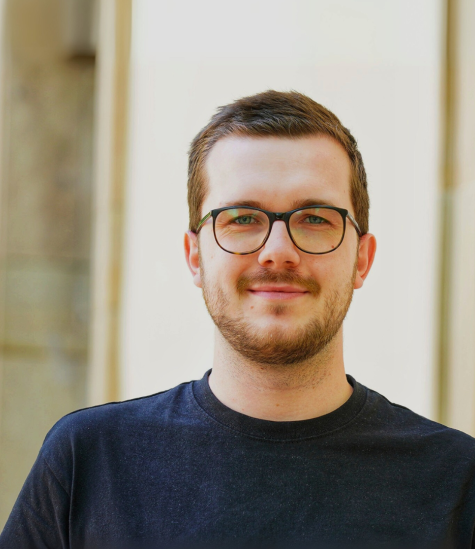
Originally from Germany, Benedikt Holzschuh completed his bachelor’s in Islamic studies and political science at University of Bamberg. Holzschuh joined CMEPS because the program “struck the perfect balance between political science, the MENA region and Arabic-language education.”
Like his peers, Holzschuh was particularly attracted by the experience abroad. He enjoyed the facilities at AUC, running and swimming at the sports center, and took some of his best seminars at the University.
“Cairo is often crazy and tumultuous, but I love that,” said Holzschuh, who toured cultural sites and hung out with his friends in Maadi or downtown in his free time. He particularly enjoyed visiting Saqqara and the various museums in Cairo; “Of course, the pyramids are a highlight.”
Next semester, Holzschuh will complete one final paper in Tübingen and write his thesis. “For my topic, I will focus on the causes of de-radicalization of Islamist militias in the Middle East,” he said.
Finn Seiffert
"CMEPS provided me with all the things I thought were missing from my studies so far."
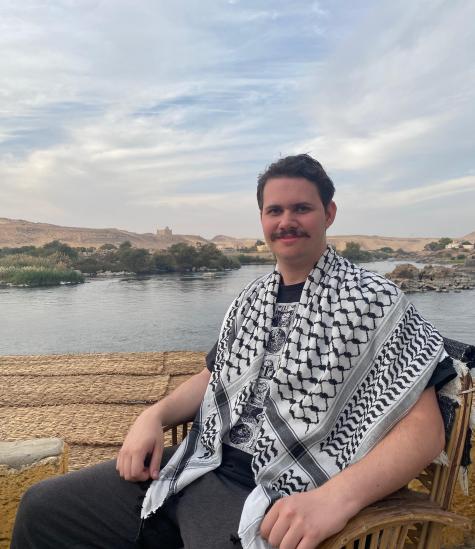
Finn Seiffert is from Bavaria, Germany. He studied world politics at Leiden University College in the Hague and graduated with a master’s in international relations before joining CMEPS.
Due to his Iranian heritage and previous coursework in Middle East politics, Seiffert developed an interest in the region. “I made the wrong choice with my first MA by not studying the Middle East,” he said. AUC’s joint program gave Seiffert the opportunity to reclaim this path.
“CMEPS provided me with all the things I thought were missing from my studies so far: Arabic language education, an exchange semester in the Middle East and a compulsory internship. CMEPS offers all these experiences you can usually only find in a bachelor’s program, so it is perfect for people who realize a bit late what they want to do,” said Seiffert.
Seiffert loved exploring Cairo’s historical sites, eating at local koshary places and practicing kickboxing on campus through the AUC classes. “The people there are very welcoming and inclusive, so it was not difficult at all to participate,” he said.
Seiffert’s favorite Egypt memory is from a weekend trip to Luxor, where his driver ended up being extremely hospitable and fun. “Without his energy, our trip would not have been nearly as memorable,” Seiffert said, “Egyptians are really hospitable people, that’s what I will always remember about them.”
Next semester, Seiffert will write his thesis on pro-government militias and why they are created or used.


